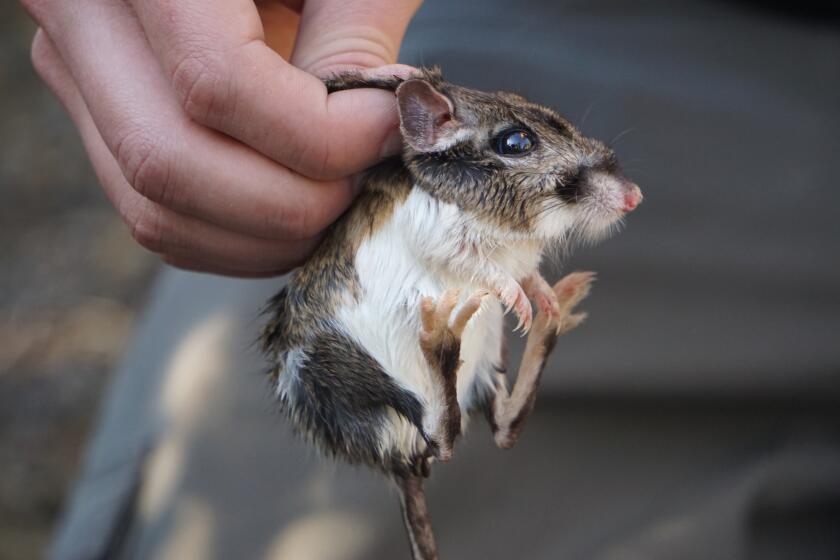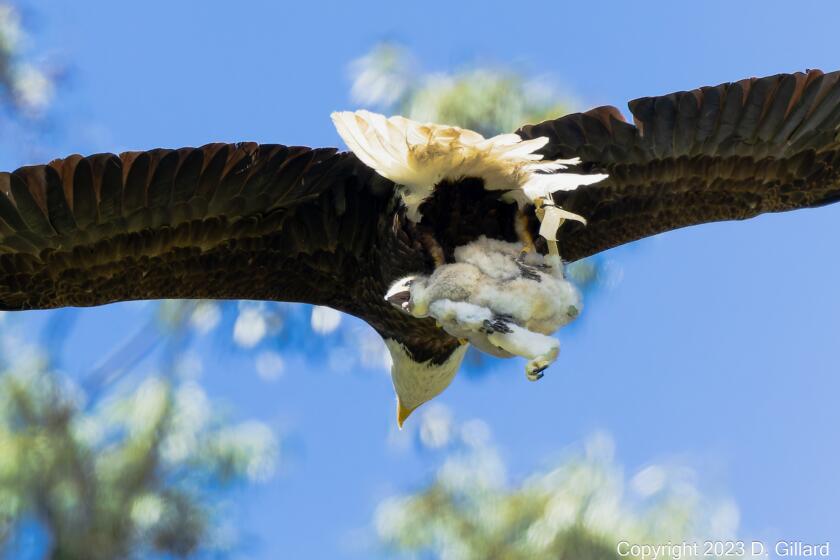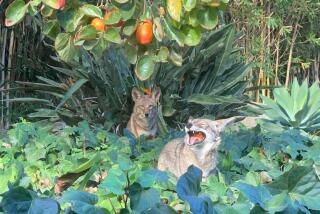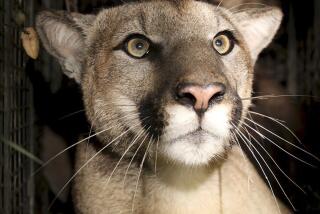Video: Bobcat mom, 2 kittens seem to be calling his Claremont yard their home. Now what?
When Patrick Cullen moved back home with his parents to help care for them, he had not met his new neighbors.
Much of his life had been spent at the Claremont home, where he recalled seeing rabbits, squirrels and even the occasional coyote in the yard. Now, he can add bobcats to the list.
Cullen first saw the bobcat family, a mother and two kittens, almost two weeks ago playing in the backyard of the home in the community nestled in the foothills of the San Gabriel Mountains.
The Santa Cruz kangaroo rat, more closely related to chipmunks and gophers than kangaroos or rats, had not been spotted in the area since the 1940s.
“The mom was kind of grooming herself, keeping watch by the little ones,” Cullen said. “The little ones seem to mostly just play. It was cute to watch.”
He has since spotted them on three occasions, most recently on June 22.
“Each time I see them, they look slightly larger,” Cullen said. “I guess they’re growing up.”
Mackenzie Rich, a human-wildlife conflict specialist with the California Department of Fish and Wildlife, said bobcats tend to have babies in the springtime. The kittens are raised by the mother over the summer and then go off on their own in the fall. Like other Southern California mammals, they have adapted to the urban built environment around them.
The brutal saga of a baby hawk that was kidnapped and raised by bald eagles has riveted Bay Area birdwatchers. No one’s entirely sure what’s going on.
“Bobcats tend to be pretty skittish animals,” Rich said. “They definitely don’t seek to be around people.”
Despite the aversion, bobcats can be drawn to “attractants” such as food, water and shelter found in backyards. Bobcats are strict carnivores and ambush predators, so they use vegetation to hide and catch rodents or other small mammals.
If you see a bobcat nearby and want it to leave, Rich recommends making yourself big and loud, also known as “hazing.” If the animal keeps visiting a certain spot, she recommends playing music or a radio talk show.
Cullen has no plans for hazing — at the moment.
“If I continue to see them,” he said, “just for the sake of my dogs, I might investigate a little bit more into some sort of deterrent.”
More to Read
Sign up for Essential California
The most important California stories and recommendations in your inbox every morning.
You may occasionally receive promotional content from the Los Angeles Times.














